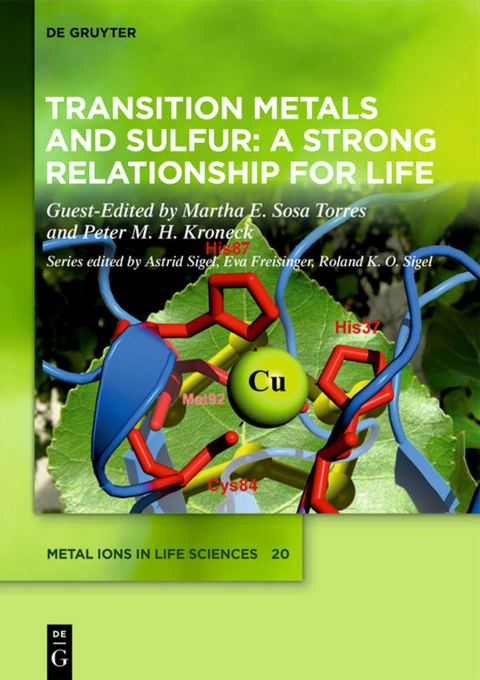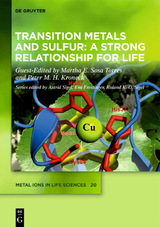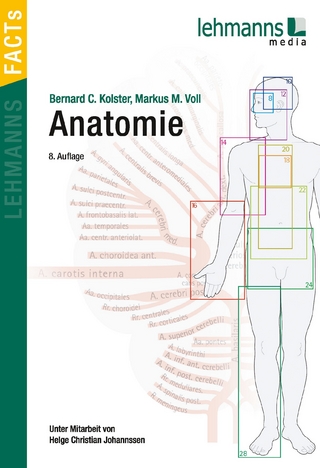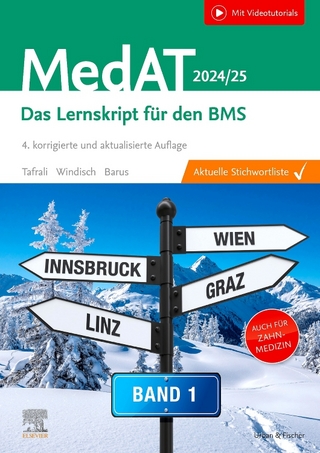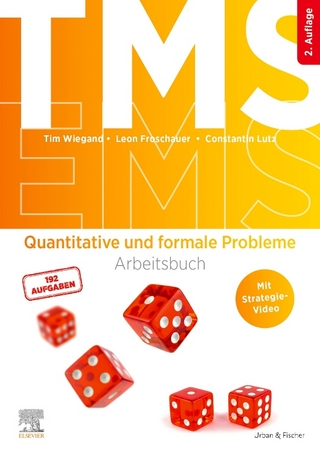Transition Metals and Sulfur – A Strong Relationship for Life
Seiten
Metal Ions in Life Sciences links coordination chemistry and biochemistry in their widest sense and thus increases our understanding of the relationship between the chemistry of metals and life processes; in fact, it is an old wisdom that metals are indispensable for life. The series reflects the interdisciplinary nature of Biological Inorganic Chemistry and coordinates the efforts of scientists in numerous interconnecting research fields.
The Sigels' Series Metal Ions in Life Sciences Metal Ions in Life Sciences links coordination chemistry and biochemistry in their widest sense and thus increases our understanding of the relationship between the chemistry of metals and life processes. It is an old experience that metals are indispensable for life. The series reflects the interdisciplinary nature of Biological Inorganic Chemistry and coordinates the efforts of scientists in fields like biochemistry, inorganic chemistry, coordination chemistry, materials sciences, molecular and structural biology, biophysics, enzymology, environmental chemistry, physiology, toxicology, pharmacy, medicine, and others. Indeed, already for years this "…series is (praised as) a timely resource" [D. Wilcox, J. Am. Chem. Soc. (2009)] "…a compilation of an incredible amount of research" [K. Duncan, Angew. Chem. Int. Ed. (2009)] "…a must for ... bioinorganic research labs" [P. Sadler, Chemistry World (2009)] "…(a) stimulate (for) the combined action of chemists, biologists, medical doctors, and physicists to contribute to new developments in the field" [G. L. Squadrito, J. Am. Chem. Soc. (2007)] ..."The editors have without question been at the forefront of promoting Biological Inorganic Chemistry over many years and this latest volume is no exception" [C. J. Marmion, Trans. Met. Chem. (2014)] "…it is a must to have" [L. Quintanar, J. Inorg. Biochem. (2016)] ..."I strongly suggest that (the volumes) should reside on the bookshelves of bioinorganic chemists, ... biochemists, biophysicists (and others) interested in the diverse ... functions carried out by metal ions in biology" [K. D. Karlin, Inorg. Chim. Acta (2016)] ..."The articles (in the series) will greatly help to overcome (the) language barrier(s) between the historically separate disciplines of chemistry, biology, medicine, and physics that hinders progress" [P. J. Sadler, Coord. Chem. Rev. (2014)] ..."(Furthermore)…Experts will find countless pieces of information that they might not have been aware of and students ... will appreciate ... (appealing) introduction(s) to an interdisciplinary field that continues to grow (rapidly) and provides future challenges for basic research and the applied sciences" [M. Egli, Trans. Met. Chem. (2016)] ..."will be a valuable addition to libraries of researchers and institutions active in cancer research, but also a helpful source for advanced teaching [H. Schmidbaur, Z. Naturforsch. B (2018)]. Clearly, the MILS series is an essential source for researchers as well as teachers preparing courses, e.g., in Bioinorganic Chemistry. Individual chapters can be downloaded.
The Sigels' Series Metal Ions in Life Sciences Metal Ions in Life Sciences links coordination chemistry and biochemistry in their widest sense and thus increases our understanding of the relationship between the chemistry of metals and life processes. It is an old experience that metals are indispensable for life. The series reflects the interdisciplinary nature of Biological Inorganic Chemistry and coordinates the efforts of scientists in fields like biochemistry, inorganic chemistry, coordination chemistry, materials sciences, molecular and structural biology, biophysics, enzymology, environmental chemistry, physiology, toxicology, pharmacy, medicine, and others. Indeed, already for years this "…series is (praised as) a timely resource" [D. Wilcox, J. Am. Chem. Soc. (2009)] "…a compilation of an incredible amount of research" [K. Duncan, Angew. Chem. Int. Ed. (2009)] "…a must for ... bioinorganic research labs" [P. Sadler, Chemistry World (2009)] "…(a) stimulate (for) the combined action of chemists, biologists, medical doctors, and physicists to contribute to new developments in the field" [G. L. Squadrito, J. Am. Chem. Soc. (2007)] ..."The editors have without question been at the forefront of promoting Biological Inorganic Chemistry over many years and this latest volume is no exception" [C. J. Marmion, Trans. Met. Chem. (2014)] "…it is a must to have" [L. Quintanar, J. Inorg. Biochem. (2016)] ..."I strongly suggest that (the volumes) should reside on the bookshelves of bioinorganic chemists, ... biochemists, biophysicists (and others) interested in the diverse ... functions carried out by metal ions in biology" [K. D. Karlin, Inorg. Chim. Acta (2016)] ..."The articles (in the series) will greatly help to overcome (the) language barrier(s) between the historically separate disciplines of chemistry, biology, medicine, and physics that hinders progress" [P. J. Sadler, Coord. Chem. Rev. (2014)] ..."(Furthermore)…Experts will find countless pieces of information that they might not have been aware of and students ... will appreciate ... (appealing) introduction(s) to an interdisciplinary field that continues to grow (rapidly) and provides future challenges for basic research and the applied sciences" [M. Egli, Trans. Met. Chem. (2016)] ..."will be a valuable addition to libraries of researchers and institutions active in cancer research, but also a helpful source for advanced teaching [H. Schmidbaur, Z. Naturforsch. B (2018)]. Clearly, the MILS series is an essential source for researchers as well as teachers preparing courses, e.g., in Bioinorganic Chemistry. Individual chapters can be downloaded.
Martha E. Sosa Torres, Universidad Nacional Autonoma de Mexico; Peter M.H. Kroneck, University of Konstanz, Germany.
"Overall, the authors and editors have undoubtedly accomplished a remarkable achievement in producing such an excellent survey of many essential but otherwise highly diverse bioinorganic transition metal systems under the general heading of coordination to the unique bioelement sulfur." Wolfgang Kaim in: Journal of Inorganic Biochemistry 210/2020, 111153, https://doi.org/10.1016/j.jinorgbio.2020.111153
| Erscheinungsdatum | 07.04.2020 |
|---|---|
| Reihe/Serie | Metal Ions in Life Sciences ; 20 |
| Zusatzinfo | 150 b/w and 150 col. ill., 100 b/w tbl. |
| Verlagsort | Berlin/Boston |
| Sprache | englisch |
| Maße | 170 x 240 mm |
| Gewicht | 961 g |
| Themenwelt | Medizin / Pharmazie ► Studium ► 1. Studienabschnitt (Vorklinik) |
| Naturwissenschaften ► Biologie ► Biochemie | |
| Naturwissenschaften ► Chemie | |
| Schlagworte | Bioanorganische Chemie • Schwefel • Schwefelproteine • Übergangsmetall |
| ISBN-10 | 3-11-058889-7 / 3110588897 |
| ISBN-13 | 978-3-11-058889-7 / 9783110588897 |
| Zustand | Neuware |
| Haben Sie eine Frage zum Produkt? |
Mehr entdecken
aus dem Bereich
aus dem Bereich
Das Lernskript für den BMS für Human- und Zahnmediziner
Buch | Softcover (2023)
Urban & Fischer in Elsevier (Verlag)
55,00 €
Buch | Softcover (2024)
Urban & Fischer in Elsevier (Verlag)
16,00 €
